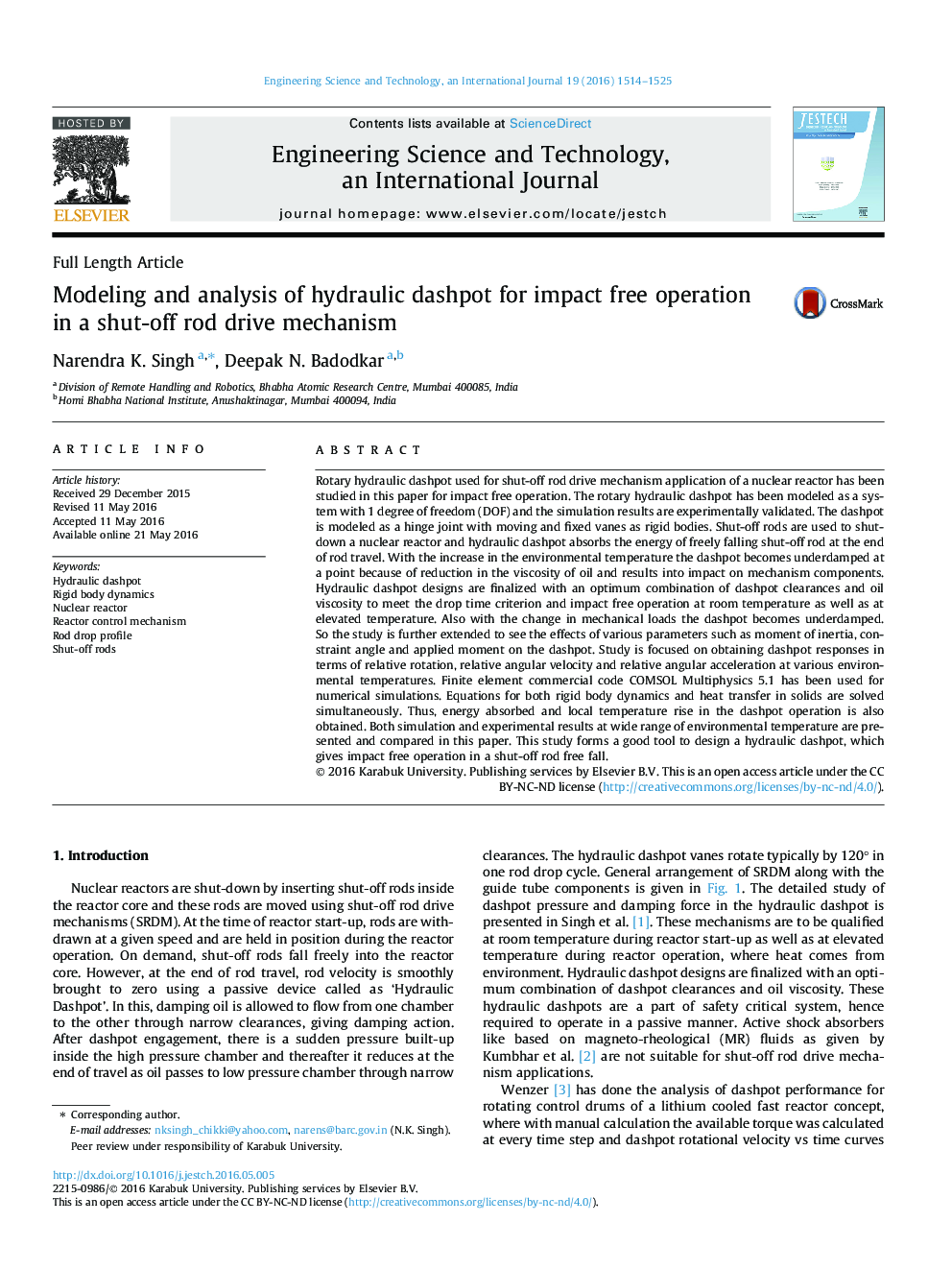| Article ID | Journal | Published Year | Pages | File Type |
|---|---|---|---|---|
| 6894368 | Engineering Science and Technology, an International Journal | 2016 | 12 Pages |
Abstract
Rotary hydraulic dashpot used for shut-off rod drive mechanism application of a nuclear reactor has been studied in this paper for impact free operation. The rotary hydraulic dashpot has been modeled as a system with 1 degree of freedom (DOF) and the simulation results are experimentally validated. The dashpot is modeled as a hinge joint with moving and fixed vanes as rigid bodies. Shut-off rods are used to shut-down a nuclear reactor and hydraulic dashpot absorbs the energy of freely falling shut-off rod at the end of rod travel. With the increase in the environmental temperature the dashpot becomes underdamped at a point because of reduction in the viscosity of oil and results into impact on mechanism components. Hydraulic dashpot designs are finalized with an optimum combination of dashpot clearances and oil viscosity to meet the drop time criterion and impact free operation at room temperature as well as at elevated temperature. Also with the change in mechanical loads the dashpot becomes underdamped. So the study is further extended to see the effects of various parameters such as moment of inertia, constraint angle and applied moment on the dashpot. Study is focused on obtaining dashpot responses in terms of relative rotation, relative angular velocity and relative angular acceleration at various environmental temperatures. Finite element commercial code COMSOL Multiphysics 5.1 has been used for numerical simulations. Equations for both rigid body dynamics and heat transfer in solids are solved simultaneously. Thus, energy absorbed and local temperature rise in the dashpot operation is also obtained. Both simulation and experimental results at wide range of environmental temperature are presented and compared in this paper. This study forms a good tool to design a hydraulic dashpot, which gives impact free operation in a shut-off rod free fall.
Keywords
Related Topics
Physical Sciences and Engineering
Computer Science
Computer Science (General)
Authors
Narendra K. Singh, Deepak N. Badodkar,
